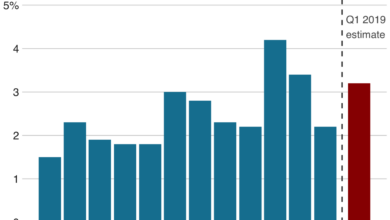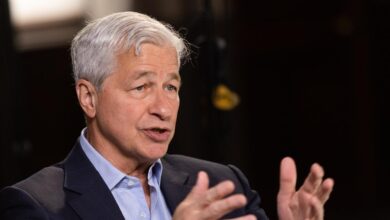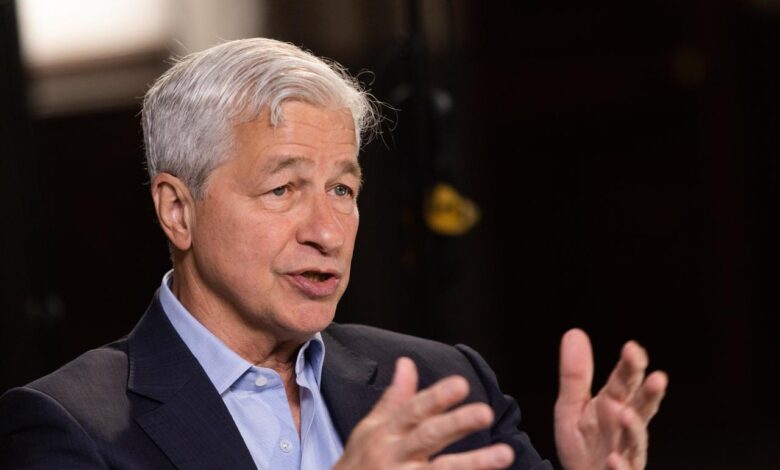
JPMorgan Chase CEO Jamie Dimon Lists US Economy Threats
JPMorgan Chase CEO Jamie Dimon lists a number of threats to the US economy, sparking concern among investors and economists alike. Dimon, known for his candid assessments of the financial landscape, recently highlighted a range of challenges that could potentially derail the nation’s economic recovery.
These threats, ranging from geopolitical tensions to rising inflation, have the potential to impact consumer spending, business investment, and overall economic growth.
Dimon’s warning serves as a stark reminder of the complex and interconnected nature of the global economy. The US, despite its economic strength, is not immune to the forces that are shaping the world. Understanding these threats is crucial for navigating the uncertain economic waters ahead.
Jamie Dimon’s Warning
Jamie Dimon, the CEO of JPMorgan Chase, has recently expressed concerns about the US economy, highlighting a number of potential threats that could impact its stability. He has warned that these threats, if left unchecked, could lead to a significant economic downturn.
Threats to the US Economy
Dimon has identified several key threats to the US economy, including:
- Inflation:Persistent inflation, which has been driven by supply chain disruptions, strong consumer demand, and government stimulus, remains a significant concern. High inflation erodes purchasing power, leading to increased costs for businesses and consumers, and can potentially trigger a wage-price spiral.
- Interest Rate Hikes:The Federal Reserve’s aggressive interest rate hikes, aimed at curbing inflation, could slow economic growth and potentially lead to a recession. Higher interest rates increase borrowing costs for businesses and consumers, making it more expensive to invest and spend.
- Geopolitical Tensions:The ongoing war in Ukraine, rising tensions between the US and China, and other geopolitical conflicts create uncertainty and volatility in global markets. These conflicts disrupt supply chains, impact energy prices, and can lead to economic sanctions, potentially harming global growth.
- Consumer Spending:Consumer spending is a key driver of the US economy. However, rising inflation and interest rates are putting pressure on household budgets, potentially leading to a decline in consumer spending. This could have a ripple effect throughout the economy, slowing down growth.
Examples of Past Economic Crises
Dimon’s concerns are not unfounded. History is replete with examples of economic crises that have been triggered by similar factors.
- The Great Recession (2008-2009):The financial crisis of 2008, triggered by a collapse in the housing market and a subsequent credit crunch, led to a severe recession. The crisis highlighted the dangers of excessive risk-taking in the financial sector and the importance of effective regulation.
- The Stagflation of the 1970s:During the 1970s, the US economy experienced a period of high inflation and slow economic growth, known as stagflation. This was largely driven by the oil crisis of 1973, which led to soaring energy prices and contributed to inflation.
Geopolitical Tensions and Global Uncertainty
Geopolitical tensions and global uncertainty have emerged as significant threats to the US economy, adding another layer of complexity to the already challenging economic landscape. These tensions can manifest in various forms, from trade disputes to international conflicts, each capable of creating significant economic disruptions and uncertainties.
Impact of Geopolitical Tensions on the US Economy
Geopolitical tensions can have a profound impact on the US economy through various channels. These include:
- Disruptions to Global Trade:Trade wars, sanctions, and other geopolitical conflicts can lead to disruptions in global supply chains, impacting the flow of goods and services. This can result in higher prices for consumers, reduced business investment, and slower economic growth.
- Increased Volatility in Financial Markets:Geopolitical tensions can create uncertainty and volatility in financial markets, leading to fluctuations in asset prices, increased borrowing costs, and reduced investment. This can have a ripple effect on businesses and consumers, impacting their confidence and spending decisions.
- Increased Costs for Businesses:Businesses operating in a volatile geopolitical environment may face higher costs due to disruptions in supply chains, increased insurance premiums, and the need to navigate complex regulatory landscapes. These increased costs can lead to reduced profits, job losses, and lower economic growth.
Jamie Dimon, CEO of JPMorgan Chase, recently highlighted a range of threats to the US economy, including inflation and geopolitical instability. It seems these concerns are compounded by natural disasters, as a federal agency issues warnings over a powerful storm system currently impacting several states.
While Dimon emphasizes the importance of long-term economic resilience, the unpredictable nature of weather events adds another layer of complexity to navigating these challenges.
- Reduced Foreign Investment:Geopolitical tensions can deter foreign investors from investing in the US economy, as they may perceive the environment as risky and uncertain. This can limit the availability of capital for businesses, hindering economic growth and job creation.
Examples of Geopolitical Tensions and their Economic Impact
The recent trade war between the US and China is a prime example of how geopolitical tensions can disrupt global trade and impact economic growth. The imposition of tariffs on goods traded between the two countries has led to higher prices for consumers, reduced business investment, and slower economic growth in both countries.The ongoing conflict in Ukraine has also had significant economic repercussions, leading to increased energy prices, supply chain disruptions, and global inflation.
The conflict has also created uncertainty for businesses operating in the region, deterring investment and hindering economic growth.
Potential Economic Consequences of Different Geopolitical Scenarios
The following table summarizes the potential economic consequences of different geopolitical scenarios:
| Scenario | Potential Economic Consequences |
|---|---|
| Escalation of the conflict in Ukraine | Higher energy prices, global inflation, supply chain disruptions, reduced economic growth. |
| Trade war with China intensifies | Higher prices for consumers, reduced business investment, slower economic growth, potential recession. |
| Major geopolitical crisis in the Middle East | Higher oil prices, global inflation, supply chain disruptions, increased risk aversion in financial markets. |
| Increased political instability in key emerging markets | Reduced foreign investment, slower economic growth, potential financial crises. |
Inflation and Interest Rate Hikes: Jpmorgan Chase Ceo Jamie Dimon Lists A Number Of Threats To The Us Economy
Inflation remains a significant concern for the US economy, eroding purchasing power and impacting consumer spending and business investment. The Federal Reserve, tasked with maintaining price stability, has been aggressively raising interest rates to combat inflation. This blog post examines the current state of inflation and the potential consequences of the Fed’s actions.
Impact of Inflation
Inflation has reached a multi-decade high, fueled by supply chain disruptions, strong consumer demand, and the ongoing war in Ukraine. This high inflation has resulted in rising prices for essential goods and services, impacting household budgets and consumer confidence. For businesses, inflation has led to increased input costs, forcing them to raise prices and potentially impacting profitability.
Interest Rate Hikes and Economic Growth
The Federal Reserve’s primary tool for controlling inflation is adjusting interest rates. By raising interest rates, the Fed aims to slow down economic growth and reduce demand, ultimately putting downward pressure on prices. Higher interest rates make borrowing more expensive for businesses and consumers, potentially leading to reduced investment and spending.
The Fed’s aggressive rate hikes have already slowed economic growth, but the full impact is yet to be seen.
Consequences of Aggressive Versus Moderate Interest Rate Increases
The Fed faces a delicate balancing act. Aggressive interest rate hikes can quickly curb inflation but risk tipping the economy into a recession. Moderate increases, on the other hand, may not be enough to tame inflation quickly, potentially leading to a prolonged period of high prices.
The Fed must carefully consider the potential consequences of its actions, weighing the risks of both too much and too little tightening.
Consumer Spending and Debt Levels
Consumer spending is a crucial driver of economic growth in the United States, accounting for roughly 70% of the country’s GDP. However, rising debt levels pose a significant risk to this crucial economic engine, potentially dampening future growth and creating financial instability.
Consumer Spending Trends and Economic Growth
Consumer spending is closely tied to economic growth. When consumers are confident about their financial future, they tend to spend more, leading to increased demand for goods and services. This, in turn, stimulates businesses to hire more workers and invest in expansion, contributing to overall economic growth.
Conversely, when consumer confidence wanes, spending decreases, leading to a slowdown in economic activity.
Impact of Rising Debt Levels
The level of consumer debt can have a significant impact on household finances and the overall economy. When households are burdened with high debt, they have less disposable income available for spending, leading to a decrease in consumer demand. This can lead to a vicious cycle, where reduced spending further weakens the economy, leading to job losses and potentially pushing more households into financial distress.
Consumer Debt Levels and Historical Trends
According to the Federal Reserve, total household debt in the United States reached a record high of $16.5 trillion in the first quarter of 2023. This includes mortgage debt, auto loans, student loans, and credit card debt. While overall household debt has been increasing in recent years, the growth rate has slowed somewhat in recent quarters.
However, the level of debt remains high, particularly for student loans and credit card debt.
Labor Market Dynamics and Wage Growth

The labor market is a crucial aspect of the US economy, influencing inflation, consumer spending, and overall economic growth. Jamie Dimon, CEO of JPMorgan Chase, has highlighted the significance of labor market dynamics and wage growth as a key factor impacting the economy’s trajectory.
Current State of the Labor Market
The US labor market has been robust in recent years, with low unemployment rates and strong job creation. The unemployment rate has hovered near historic lows, indicating a tight labor market with high demand for workers. The Bureau of Labor Statistics reported an unemployment rate of 3.7% in June 2023, demonstrating a continued strong job market.
This low unemployment rate suggests that employers are struggling to find qualified candidates, leading to competition for talent and potential upward pressure on wages.
Impact of Wage Growth on Inflation and Consumer Spending
Rising wages can contribute to inflation by increasing the cost of production for businesses, which may pass on these costs to consumers through higher prices. This phenomenon is known as a wage-price spiral, where higher wages lead to higher prices, which in turn lead to demands for even higher wages.
However, wage growth can also boost consumer spending by increasing disposable income. When workers earn more, they have more money to spend on goods and services, stimulating economic activity.
Potential Challenges and Opportunities in the Labor Market
The labor market faces several challenges, including:
- Skill Gaps:The mismatch between available jobs and the skills of the workforce can lead to unemployment and underemployment. Technological advancements are creating new job opportunities that require specialized skills, while some traditional jobs are being automated.
- Labor Shortages:Certain industries, such as healthcare and construction, are experiencing labor shortages, which can lead to higher wages and increased costs for businesses. These shortages can be attributed to factors such as an aging population, declining birth rates, and limited immigration.
- Rising Labor Costs:As businesses compete for talent, they may offer higher wages and benefits, which can increase labor costs and potentially lead to inflation. This dynamic can also create challenges for businesses with tight profit margins.
Despite these challenges, the labor market presents opportunities for:
- Upskilling and Reskilling:Workers can benefit from training and education programs that equip them with the skills needed for in-demand jobs. Government initiatives and private sector programs can play a role in providing access to these opportunities.
- Attracting and Retaining Talent:Businesses can attract and retain skilled workers by offering competitive salaries, benefits, and flexible work arrangements. Creating a positive work environment and promoting employee well-being can also contribute to talent retention.
- Innovation and Productivity:By investing in technology and automation, businesses can improve productivity and efficiency, potentially offsetting the impact of rising labor costs. This can also create new job opportunities in areas such as software development and data analytics.
Energy Prices and Supply Chain Disruptions
The recent surge in energy prices and persistent supply chain disruptions pose significant challenges to the US economy, exacerbating inflationary pressures and hindering economic growth. These factors have a ripple effect across various industries, impacting businesses and consumers alike.
Impact of Volatile Energy Prices, Jpmorgan chase ceo jamie dimon lists a number of threats to the us economy
Fluctuating energy prices, particularly for oil and natural gas, have a direct impact on inflation and economic activity. When energy prices rise, businesses face increased input costs, which they may pass on to consumers in the form of higher prices.
JPMorgan Chase CEO Jamie Dimon recently listed a number of threats to the US economy, including inflation, geopolitical instability, and the potential for a recession. However, a new development that could add to these concerns is the Biden administration’s negotiation of a deal to give the WHO authority over US pandemic policies, as reported here.
While the administration argues this will strengthen global health security, critics worry it could erode US sovereignty and create a potential for overreach by international organizations. Dimon’s concerns about the US economy seem to be amplified by this latest development, which could add another layer of uncertainty to an already challenging landscape.
This leads to a rise in the consumer price index (CPI), a key measure of inflation. Furthermore, higher energy costs can dampen consumer spending as households allocate a larger portion of their income towards essential energy needs. This can lead to a decline in discretionary spending, slowing economic growth.
Challenges Posed by Supply Chain Disruptions
Supply chain disruptions, often caused by factors such as geopolitical tensions, natural disasters, and labor shortages, create significant challenges for businesses. These disruptions can lead to delays in production, shortages of raw materials, and increased transportation costs.Businesses may struggle to meet customer demand, potentially losing market share and profitability.
In some cases, supply chain disruptions can even force businesses to shut down operations temporarily.
Industries Vulnerable to Energy Price Fluctuations and Supply Chain Disruptions
Several industries are particularly vulnerable to energy price fluctuations and supply chain disruptions.
Energy-Intensive Industries
Industries with high energy consumption, such as manufacturing, transportation, and agriculture, are highly susceptible to energy price fluctuations. For example, the manufacturing sector relies heavily on natural gas for heating and power generation. When natural gas prices rise, manufacturing costs increase, potentially leading to job losses and reduced production.
Industries Dependent on Global Supply Chains
Industries with complex global supply chains, such as electronics, automotive, and pharmaceuticals, are vulnerable to disruptions in specific regions. For instance, the automotive industry relies on semiconductor chips sourced from Asia. Disruptions to semiconductor production, such as those caused by the COVID-19 pandemic, can lead to delays in vehicle production and higher prices.
Industries with Limited Substitute Options
Industries with limited substitute options for essential inputs are more vulnerable to supply chain disruptions. For example, the agricultural sector relies on fertilizer, which is produced from natural gas. Disruptions to fertilizer production can lead to crop shortages and higher food prices.
Government Policy and Economic Stimulus
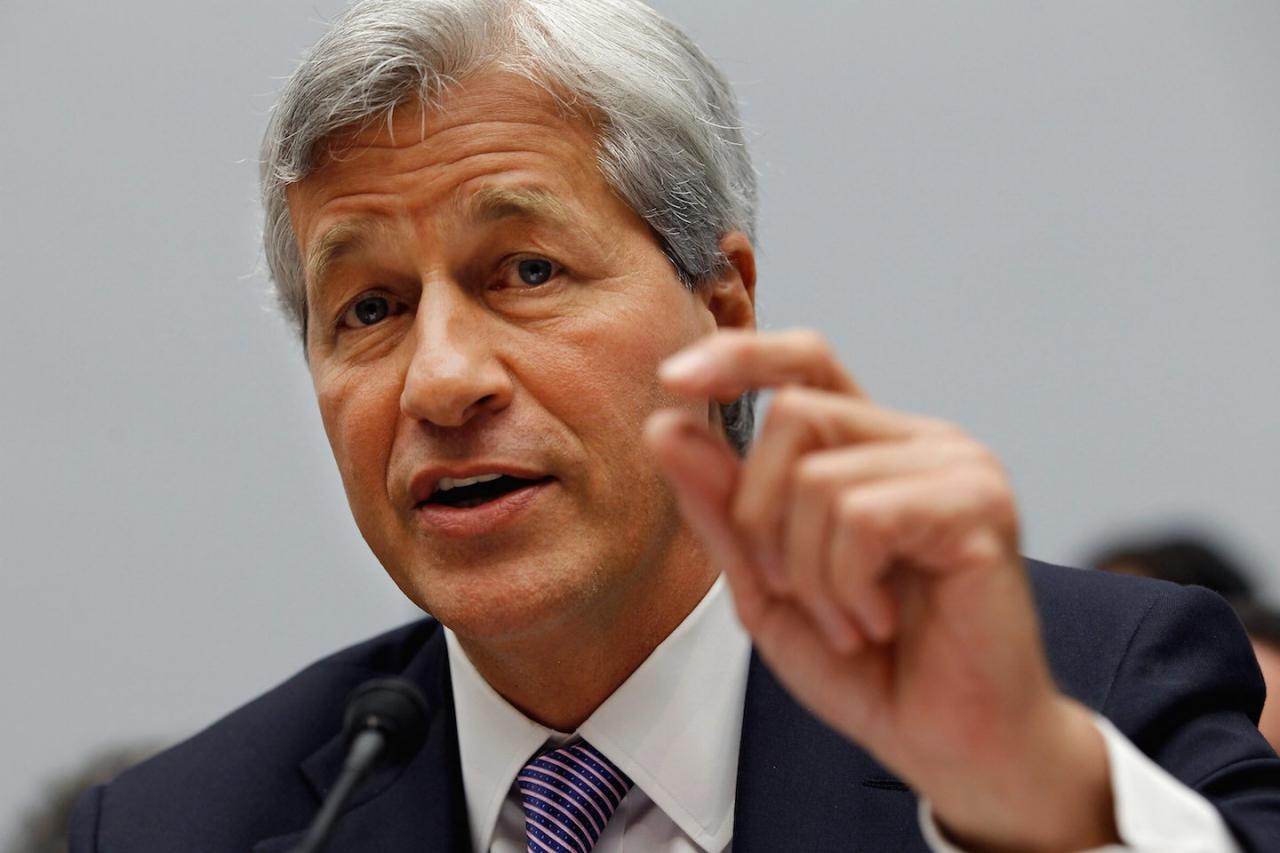
Jamie Dimon’s warning about the potential threats to the US economy extends to the realm of government policy and economic stimulus. Government intervention, while often intended to bolster economic growth, can have complex and sometimes unintended consequences. Understanding the potential impact of government policies, both positive and negative, is crucial for navigating economic challenges.
Impact of Government Policies on Economic Growth
Government policies can significantly influence economic growth through various mechanisms. Fiscal spending, for instance, can stimulate demand by increasing government purchases of goods and services or by providing tax breaks and subsidies to businesses and consumers. This can lead to increased production, employment, and overall economic activity.
However, excessive spending can also lead to inflation and increased government debt, potentially hindering long-term growth.Tax cuts, on the other hand, can boost economic growth by increasing disposable income for consumers and encouraging businesses to invest and expand. However, the effectiveness of tax cuts depends on factors such as the size of the cut, the targeted groups, and the overall economic climate.
Effectiveness of Past Economic Stimulus Measures
Past economic stimulus measures, such as the American Recovery and Reinvestment Act of 2009, have been credited with mitigating the severity of the Great Recession. However, the effectiveness of such measures is often debated. Some argue that these measures were essential in preventing a deeper economic downturn, while others contend that they were ineffective or even counterproductive.
The effectiveness of economic stimulus measures can vary depending on the specific context, the timing of the intervention, and the underlying economic conditions.
Current Government’s Economic Agenda and its Potential Effects
The current government’s economic agenda is focused on policies such as infrastructure spending, tax cuts, and deregulation. These policies aim to boost economic growth, create jobs, and enhance competitiveness. However, the potential effects of these policies are subject to debate.
JPMorgan Chase CEO Jamie Dimon recently highlighted a range of economic risks facing the US, from inflation and rising interest rates to geopolitical tensions. While these factors are undoubtedly significant, it’s important to remember that the health of the population is also crucial to economic stability.
A recent study, novavax covid 19 vaccine associated with heart inflammation study , has raised concerns about the potential for certain vaccines to cause heart inflammation, which could have implications for long-term health and productivity. As Dimon emphasizes, the US economy faces a complex web of challenges, and addressing these issues requires a comprehensive approach that prioritizes both economic and public health considerations.
Some economists argue that infrastructure spending can be a powerful tool for stimulating economic growth, while others caution that it can lead to inefficiencies and waste if not carefully managed.
Financial Market Volatility and Risk
Financial market volatility is a significant concern for investors and policymakers alike, as it can have a profound impact on economic activity and investor confidence. Volatility arises from various factors, including inflation, interest rate hikes, geopolitical uncertainty, and economic growth prospects.
Understanding the potential impact of these factors is crucial for navigating the complex landscape of financial markets.
Impact of Volatility on Investor Confidence and Economic Activity
Volatility in financial markets can significantly impact investor confidence, leading to a decline in investment and economic activity. When markets are volatile, investors become more risk-averse, reducing their willingness to invest in stocks, bonds, and other assets. This can lead to a decrease in capital formation, hindering economic growth.
Risks Associated with Rising Interest Rates, Inflation, and Geopolitical Uncertainty
Rising interest rates, inflation, and geopolitical uncertainty are significant contributors to financial market volatility. Rising interest rates can increase borrowing costs for businesses and consumers, potentially slowing economic growth. Inflation erodes the purchasing power of consumers, leading to reduced spending and potentially triggering a recession.
Geopolitical uncertainty, such as wars or trade disputes, can create significant economic instability, impacting global markets and investment sentiment.
Examples of Past Financial Crises and Their Impact on the Economy
History is replete with examples of financial crises that have had devastating consequences for economies worldwide. The 2008 financial crisis, triggered by the collapse of the housing market and the subsequent failure of numerous financial institutions, resulted in a global recession.
The 1997 Asian financial crisis, stemming from currency devaluation and financial instability, led to widespread economic hardship in the region. These examples highlight the potential for financial market volatility to cause significant economic damage.
Conclusive Thoughts
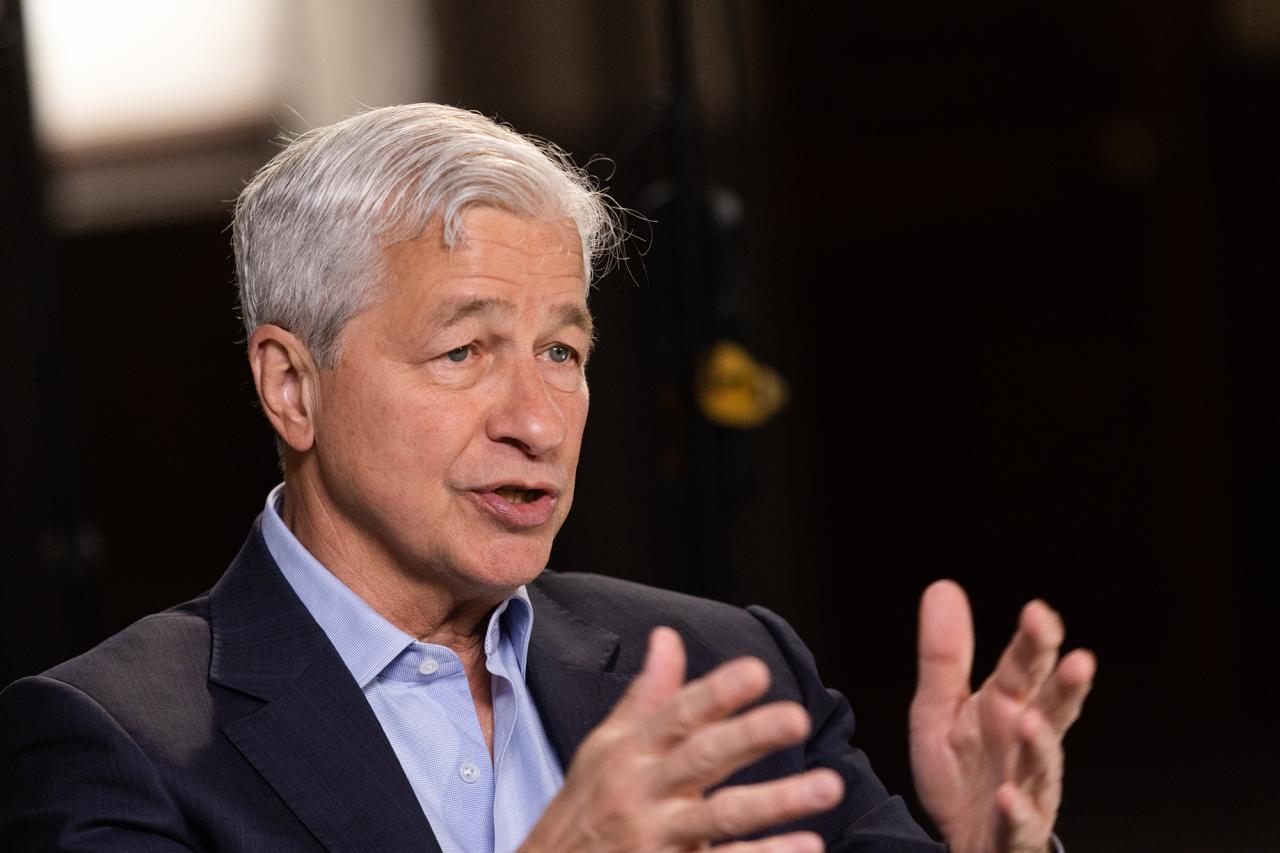
Jamie Dimon’s warnings underscore the importance of vigilance and preparedness in the face of economic uncertainty. While the US economy has shown resilience in the past, the confluence of these threats demands a proactive approach. By understanding the challenges ahead, policymakers, businesses, and individuals can better position themselves to navigate these turbulent times and mitigate potential risks.


